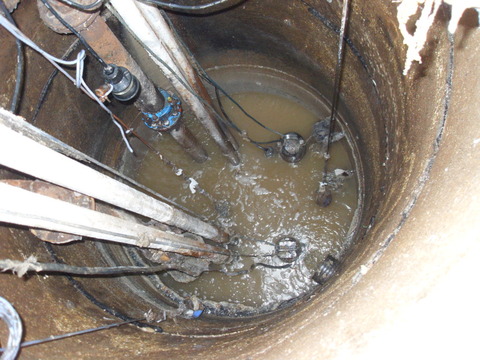Pump saves village sewage station from being priced out of existence
4 Jan 2018

The environmental horrors created by blockages accumulating in the sewage systems of major cities are well known. Less so the dangers to very small communities.
Last year the record-breaking mound of fat, oil and grease (FOG) in London’s Whitechapel district made the news headlines. A section of it is even due to become a permanent museum exhibit in the capital.
Not as well documented, but no less an issue in terms of their relative impact, are the problems with which much smaller residential areas have to contend.
The village of Harleston in Suffolk is a case in point. Located in the centre of the county, just west of Stowmarket, it includes a site where Anglian Water maintains a small wet well raw sewage pumping station in one local street.
The site accepts waste from the domestic properties that surround it. As in London, this includes the usual FOG content, together with its extra modern day ingredient: wipes.
This combination had contributed to an increase in rag build up that made the station pumps more susceptible to blockages.
Maintenance was by then more than 300% of the original purchase price of a single pump
The result was a marked rise in the incidence and cost of reactive maintenance, including out of hours emergency calls, unscheduled tinkering, increased wet well cleaning cycles and lifting/deragging of pumps.
Eventually, things reached the point where the outlay had become disproportionate to the station’s size and capacity. The annual cost of maintenance was by then more than 300% of the original purchase price of a single pump unit employed there.
Coupled with a growing level of complaints from nearby householders, these factors threatened the viability of the site.
Anglian Water turned to Hidrostal technology for a solution While the original pumps on thesite were installed for their energy benefit and innovative designs, these had been unable to cope with the waste water output from a modern residential neighbourhood.
The decision was taken that one of the units would be replaced, with the client opting for the Hidrostal Screw centrifugal impeller pump.
The company’s single screw centrifugal impeller design was chosen because of its increased free passage and rag handling capabilities that were complemented by the machine’s ability to maintain a high level of hydraulic efficiency.
The replacement pump was retrofitted with minimal disruption to the existing installation, which was on a permanently installed guide rail mounted system.
Some 18 months since the installation of the Hidrostal pump, it was noted that there had been not a single reactive call out. The Harleston network pumping station has now returned to requiring a single scheduled annual wet well clean and maintenance visit.
As a result, the village has retained its sewage facility. Meanwhile, the water company has been spared having to make the choice between continuing to maintain an operation that was commercially unviable or opting to finance a costly replacement provision.

